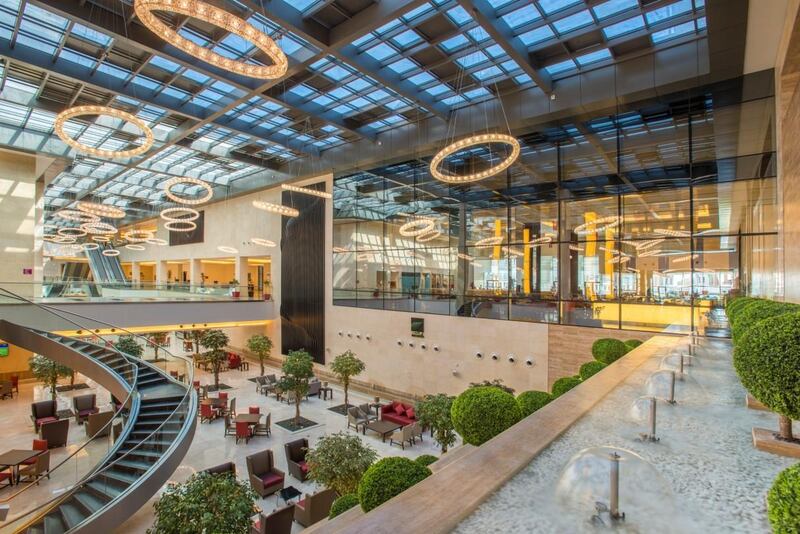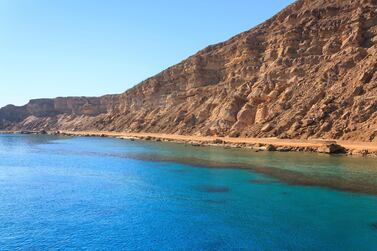InterContinental Hotels Group, which owns the Crowne Plaza, Holiday Inn, Intercontinental and other brands, expects to double its portfolio in Saudi Arabia to more than 60 hotels over the next three to five years to serve the kingdom’s expanding tourism sector, the company’s regional director said.
"Saudi Arabia has always been the number one market for us, and remains the number one market for us," Pascal Gauvin, IHG's managing director for India, the Middle East and Africa, told The National.
“One of the key pillars of Saudi’s Vision 2030 [economic diversification roadmap] is about growing the contribution of tourism to the national economy, and you can imagine we’re really going to the heart of this.”
The number of international arrivals to the kingdom is set to increase by around 4 per cent per year to reach 22.1 million by 2025, according to the World Travel and Tourism Council. Saudi Arabia is investing in new hospitality-focussed projects to fuel tourism, such as its $500 billion Red Sea mega-development, Neom.
“We will really benefit from the Red Sea resort, and from growth in cities like Jeddah and Riyadh – it is really exciting for us,” Mr Gauvin said.
New York-listed IHG operates 33 hotels in Saudi Arabia at present, with 13 more scheduled to open in the next two to three years, and more to come based on ongoing conversations with prospective partners, the managing director added. On Sunday, IHG signed a distribution agreement with Saudi Arabia-based travel operator Seera Group (formerly Al Tayyer Travel Group) to promote services to IHG’s hotel guests.
Of IHG’s 5,600 properties worldwide, 140 are in the Middle East, Africa and India, and 91 in the Middle East alone, with 37 more to open in the next three years.
“Overall, the Middle East is doing very well for us,” Mr Gauvin said.
IHG is introducing several new hotel brands to the region in the coming 12 months, including the first in a handful of upscale Regent properties following IHG’s acquisition of 51 per cent of UK-based Regent Hotels & Resorts last year. It opened the first regional branch of its newly created Voco brand in Dubai three weeks ago, and has signed to open two more, in Saudi Arabia and Egypt. There are also plans to open a 200-room Hotel Indigo (a boutique hotel concept) in Dubai in October, and launch a new hotel suites brand in the region, similar to IHG’s Staybridge Suites but more upscale.
In addition, IHG expects to sign an agreement this year to open the first Kimpton Hotels & Restaurants in the Middle East, after IHG acquired US-based Kimpton in 2014. There will most likely be “a handful” of Kimpton hotels opening in the region in future, according to Mr Gauvin, and the company is “always looking for new acquisition opportunities in the region and beyond”.
IHG does not disclose regional breakdowns of financial performance. Worldwide, the group’s full-year revenues were up 6 per cent year-on-year to $1.8bn in 2018, although pre-tax profits dropped 26 per cent to $485m, attributed to extra costs from corporate restructuring, the company said in a stock market filing in February.
The group added 56,000 new rooms during the year, taking its total global portfolio to 837,000 rooms.
In the Middle East, hotel revenues and room rates have been subject to steep declines in recent years because of low oil prices denting consumer purchasing power, as well as rising supply of hotel keys as the market matures.
While there remains appetite for luxury hotels in the region, 50 per cent of IHG’s regional pipeline is in the mid-market segment to tap into strong demand for affordable hotels and reduce operational costs, according to Mr Gauvin.
“There is always some space for luxury hotels, but the industry is maturing,” he said. “Worldwide, luxury only accounts for around 5 per cent of the whole hospitality market, so that shows the scale of the opportunity in other segments.”







